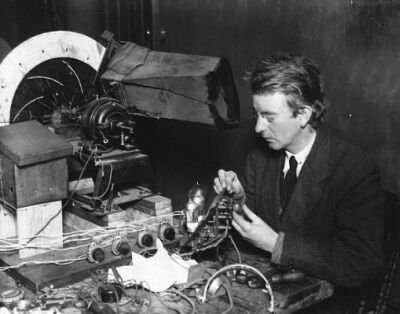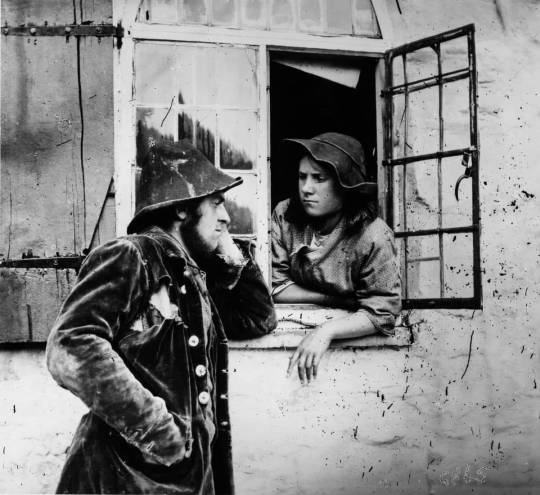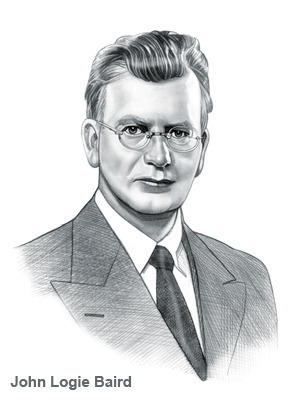#London Stereoscopic Company
Explore tagged Tumblr posts
Text

Stereoscopic Adventures in Hell by Denis Pellerin
#my post#diablerie#art#london stereoscopic company#stereoscopic#clay#sculpture#french tissues#late 1800s#denis pellerin
9 notes
·
View notes
Text

Halloween 1865 (ph. London Stereoscopic Company)
2 notes
·
View notes
Text

8th February 1928 saw John Logie Baird demonstrate his invention, the television, transmitting from London to New York.
A man and a woman sat before an electric eye in a London laboratory tonight and a group of persons in a darkened cellar in this village outside New York watched them turn their heads and move from side to side.
The images were crude, imperfect, broken, but they were images none the less. Man’s vision had panned the ocean; transatlantic television was a demonstrated reality, and one more great dream of science was on the way to realisation.
The demonstration was made by the Baird Television Development Companyof London, using short-wave radio sets for transmission of the “vision sound” and the televisor invented by John L.Baird – who has also invented an instrument for seeing in the dark – for turning this sound back into vision after its ocean hop.
The transformed vision of the man and woman in the London laboratory came through the ether in the form of a bumblebee’s hum, a musical buzz or irregular cadence representing in sound the lights and shadows of their faces – all that was transmitted in the test.
When the televisor, a black box compact enough to be carried around in a taxi, had done its work with this rhythmic rumble from across the sea the visions gradually built themselves up of tiny oblongs of light suspended in a whirling rectangle of brilliance in the machine’s gaping mouth.
The vision of the woman appeared broken and scattered, but it was still plain that she was a woman and that she was showing first the full face and then the profile.
The demonstration was attended on this end by Captain O.G.Hutchinson, managing director of the Baird Company, who came to this country especially for the purpose; Benjamin Clapp, who has been working on secret tests of the televisor; R.M. Hart, owner of short wave radio station 2CVJ, who has done the receiving of the vision sound; and an Associated Press reporter.
The vision sound was sent across the ocean by short wave radio station 2KZ, of only two kilowatts power.
In the following years he also gave the first demonstration of both colour and stereoscopic television. The basis of which later would form the basis of the technique used by NASA to bring live colour TV pictures from the moon (he continued to be fascinated by colour television, and in the 30s and 40s demonstrated colour pictures that were of outstanding quality
[partial extract from leader in New York Times, February 11th 1928]
…His success deserves to rank with Marconi’s sending of the letter “s” across the Atlantic – the first intelligible signal ever transmitted from shore to shore in the development of transoceanic radio telegraphy. As a communication Marconi’s “s” was negligible; as a milestone in the onwards sweep of radio, of epochal importance. And so it is with Baird’s first successful effort in transatlantic television. .… Whatever may be the future of television, to Baird belongs the success of having been a leader in its early development.
16 notes
·
View notes
Text

Print depicting Isa Bowman and Bessie Hatton as the Young Princes in Richard III, from an original photograph by the London Stereoscopic Company. (V & A)
2 notes
·
View notes
Photo

Champion Jamaican/ Australian heavyweight Boxer Peter Jackson (by London Stereoscopic Company, 1889)
34 notes
·
View notes
Text

Singers Albert Jonas and John Xiniwe of the African Choir, pose with an early camera (by the London Stereoscopic Company in 1891)
2 notes
·
View notes
Photo

🔸 This idyllic photograph entitled “window call” was taken by William Morris Grundy in 1857. He captures the rural life in England during the Victorian era. Born in Birmingham in 1806, Grundy took up photography in 1855 and made dozens of stereoscopic photos, primarily posed genre scenes of rustic pursuits such as hunting, fishing, and farming. The London Stereoscopic Company bought about 200 of his negatives, and individual stereographs still exist. However, Grundy’s work is best known for the twenty original albumen prints based into the anthology Sunshine in the Country, A Book of Rural Poetry Embellished with Photographs from Nature (London, 1861). #victorianchaps #oldphoto #victorian #vintage #goodolddays #rurallife #1850s #nostalgia #williammorrisgrundy #pastlives #history #england #retro #fashion https://www.instagram.com/p/CpBAOeVjiCt/?igshid=NGJjMDIxMWI=
#victorianchaps#oldphoto#victorian#vintage#goodolddays#rurallife#1850s#nostalgia#williammorrisgrundy#pastlives#history#england#retro#fashion
14 notes
·
View notes
Video
youtube
Brian May's London Stereoscopic Company Christmas Ad 2023
0 notes
Text

"This idyllic photograph entitled “window call” was taken by William Morris Grundy in 1857. He captures the rural life in England during the Victorian era. Born in Birmingham in 1806, Grundy took up photography in 1855 and made dozens of stereoscopic photos, primarily posed genre scenes of rustic pursuits such as hunting, fishing, and farming. The London Stereoscopic Company bought about 200 of his negatives, and individual stereographs still exist. However, Grundy’s work is best known for the twenty original albumen prints based into the anthology Sunshine in the Country, A Book of Rural Poetry Embellished with Photographs from Nature (London, 1861). He died in 1856.
https://www.getty.edu/art/collection/object/1040D2
https://mashable.com/feature/william-grundy-english-views
https://www.rct.uk/collection/2906231/reclining-smoker
https://rarehistoricalphotos.com/rural-victorian-england-photos-william-grundy/
> Steve Gallagher > Public Domain Photos and Images
0 notes
Photo

London Stereoscopic Company - Coral, about 1860
108 notes
·
View notes
Video
Halloween Greetings - The Country Lane Ghost - A Stereo Card by Beverly Via Flickr: This is a London Stereoscopic Company card from the series the 'New "Spirit" Photographs' series, "The Country Lane Ghost". Happy Hauntings to all my flickr friends! I am also posting the detail of one side of the card.
#London Stereoscopic Company#stereo view#stereo card#The Country Lane Ghost#ghost#3D#On this day in history#flickr
2 notes
·
View notes
Text

From the London Stereoscopic Company, 1865
5 notes
·
View notes
Video
instagram
#Brian May#my guitar god love#London Stereoscopic Company#Diableries#this is neat!#Miss Satan#today is the 30th of Halloween#halloween eve!#halloween#HalloQueen
3 notes
·
View notes
Text



14th June 1946 John Logie Baird, inventor of the first television, died.
Much has been said about Baird, some claim that due to the fact his version of the Television did not get taken up that he is not actually the “real” inventor. However without Baird’s innovations Television might not have been taken up , or come about as it did.
Even as a child, Baird—who was born in Helensburgh, Scotland—showed great aptitude for innovation. As a youngster, he facilitated easier communication with a few of his best friends by setting up a rudimentary telephone exchange from his bedroom that would allow him to quickly connect with his buddies.
Baird used whatever items he could find to begin building a prototype for his mechanical television, including an old hatbox, some bicycle lights, a pair of scissors, darning needles, glue, and sealing wax.
The first public demonstrations were in Selfridges in 1925, The store sent out a circular, which stated:
Selfridge’s
Present the First Public Demonstration of Television
In the Electrical Section (First Floor)
Television is to light what telephony is to sound-
It means the INSTANTANEOUS transmission of a picture, so the observer at the “receiving” end can see, to all intents and purposes, what is a cinematographic view of what is happening at the “sending” end.
Over the next several years, Baird continued to make improvements to his tele visor, and kept increasing the distance that it could transmit content.
In 1927, he managed to transmit an image a total of 438 miles between London and Glasgow.
On February 9, 1928, his Baird Television Development Company produced the first transatlantic television broadcast, from London to New York. Even with all those firsts, Baird kept pushing for more. On August 10, 1928, he demonstrated the first 3D television, which he called “stereovision.” “By applying the stereoscope principle to television, it has now become possible to transmit television images with all the appearance of depth and solidity; and, by a further combination of colored television with stereoscopic television, the complete illusion of images in natural colors, and with depth and solidity becomes possible,” wrote the Radio Times in November of 1928. “All this has been recently demonstrated in the Baird Laboratories.” He dreamed of big-screen TVs with high-definition pictures.
Baird wanted to televise ‘live’ sport in cinemas, and in 1931, he invented a TV camera for ‘outside broadcasts’.
John Logie Baird died on this at Bexhill-on-Sea, East Sussex in 1946 aged 57.
14 notes
·
View notes
Text
Tfw you forget the free add-on for your online order, so the shop emails you directly with the freebies, before you've even finished composing the "whoops I forgot the thing" note to them 😅
(I guess I managed to order the new OWL viewer before the page was fully live. Go me! Thankfully they noticed and sent me the bonus pics anyway.)
1 note
·
View note
Photo

paul xiniwe, the african choir, london stereoscopic company
30 notes
·
View notes